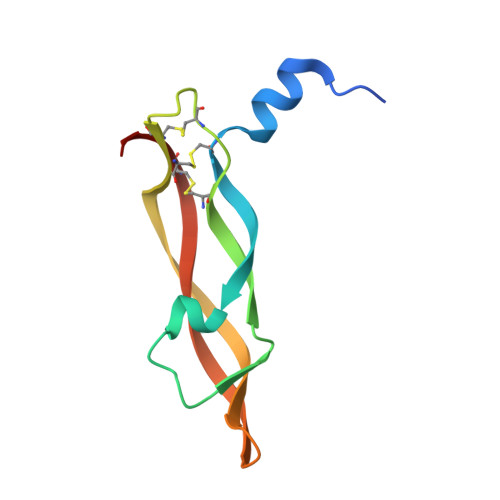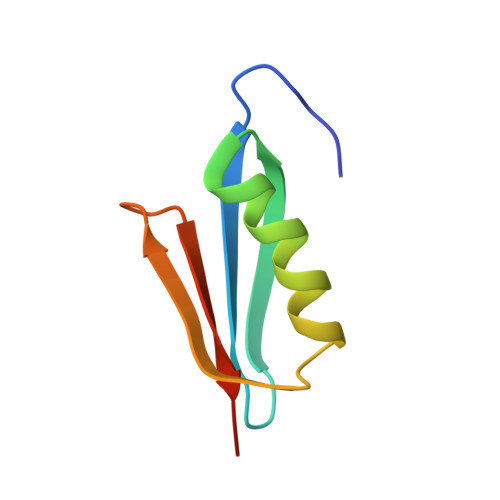A Potent d-Protein Antagonist of VEGF-A is Nonimmunogenic, Metabolically Stable, and Longer-Circulating in Vivo.
Uppalapati, M., Lee, D.J., Mandal, K., Li, H., Miranda, L.P., Lowitz, J., Kenney, J., Adams, J.J., Ault-Riche, D., Kent, S.B., Sidhu, S.S.(2016) ACS Chem Biol 11: 1058-1065
- PubMed: 26745345
- DOI: https://doi.org/10.1021/acschembio.5b01006
- Primary Citation of Related Structures:
5HHC, 5HHD - PubMed Abstract:
Polypeptides composed entirely of d-amino acids and the achiral amino acid glycine (d-proteins) inherently have in vivo properties that are proposed to be near-optimal for a large molecule therapeutic agent. Specifically, d-proteins are resistant to degradation by proteases and are anticipated to be nonimmunogenic. Furthermore, d-proteins are manufactured chemically and can be engineered to have other desirable properties, such as improved stability, affinity, and pharmacokinetics. Thus, a well-designed d-protein therapeutic would likely have significant advantages over l-protein drugs. Toward the goal of developing d-protein therapeutics, we previously generated RFX001.D, a d-protein antagonist of natural vascular endothelial growth factor A (VEGF-A) that inhibited binding to its receptor. However, RFX001.D is unstable at physiological temperatures (Tm = 33 °C). Here, we describe RFX037.D, a variant of RFX001.D with extreme thermal stability (Tm > 95 °C), high affinity for VEGF-A (Kd = 6 nM), and improved receptor blocking. Comparison of the two enantiomeric forms of RFX037 revealed that the d-protein is more stable in mouse, monkey, and human plasma and has a longer half-life in vivo in mice. Significantly, RFX037.D was nonimmunogenic in mice, whereas the l-enantiomer generated a strong immune response. These results confirm the potential utility of synthetic d-proteins as alternatives to therapeutic antibodies.
- Banting and Best Department of Medical Research and Department of Molecular Genetics, the Donnelly Centre, University of Toronto , Toronto, Ontario, Canada M5S 3E1.
Organizational Affiliation:


















